Picture this: You’re on the pickleball court, paddle in hand, ready to dominate your opponents. The game is in full swing, and you’re feeling pretty confident. But suddenly, the referee blows the whistle and calls a fault. You’re left standing there, confused and frustrated, wondering what just happened. Faults in pickleball can be a real game-changer, and understanding what they are and how to avoid them is crucial for any pickleball player. This article will dive deep into the world of faults in pickleball and equip you with the knowledge you need to stay one step ahead on the court. So, grab your paddle, tighten your sneakers, and let’s get fault-free!
What Is a Fault in Pickleball?
A fault in pickleball is a violation of the rules that results in a point being awarded to the opposing team. Just like any other sport, there are specific rules and regulations that players must follow in order to maintain fairness and sportsmanship on the court.
One of the most common faults in pickleball is stepping into or touching the non-volley zone, also known as the “kitchen.” This area, located just outside of the net, is reserved for volley shots only and players are not allowed to step into it or touch any part of it while making a shot.
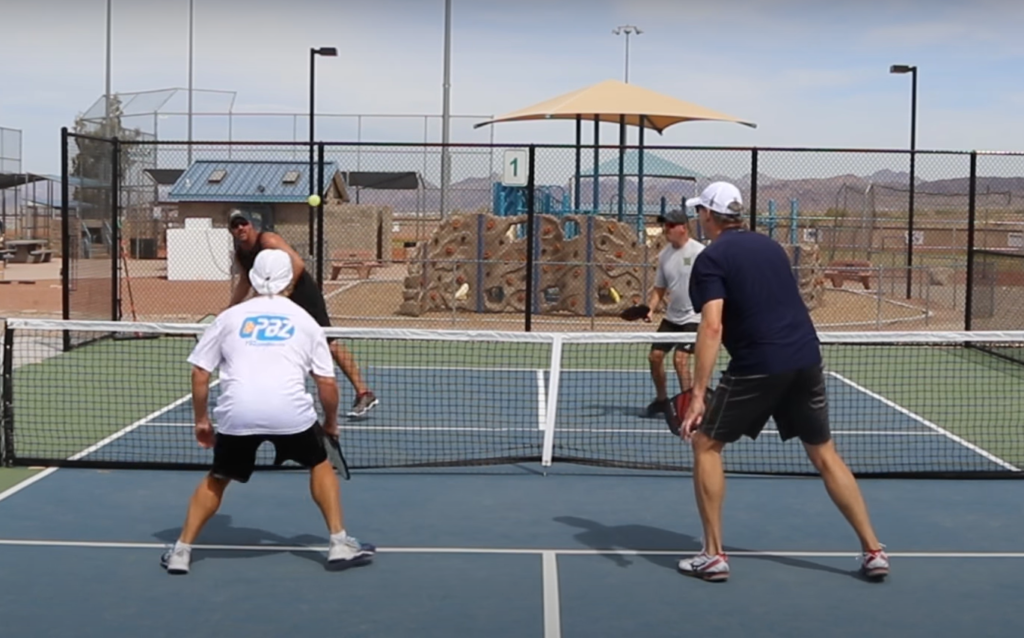
Another common fault is hitting the ball out of bounds. In pickleball, if a player hits the ball outside of the designated court boundaries, it is considered out and results in a fault. Similarly, players are not allowed to touch the net or any part of the opposing team’s court while making a shot. Doing so results in a fault and gives the opposing team a point.
In addition, players must adhere to the “double bounce” rule, where each team must let the ball bounce once on each side before it can be volleyed.
While these are just some of the most common faults in pickleball, there are many others that players must be aware of. It’s important to familiarize yourself with all of the rules and regulations before playing in order to avoid committing faults and giving points to the opposing team.
Pickleball is a fun and exciting sport, but it’s essential to play by the rules in order to maintain fairness and sportsmanship on the court. By understanding what constitutes a fault, players can improve their gameplay and avoid making costly mistakes that could result in a loss. So next time you step onto the pickleball court, remember to play with integrity and follow the rules in order to have a great game [1]!
Common Pickleball Faults To Avoid for a Winning Strategy
The Two-Bounce Rule
One of the most common faults in pickleball is related to the two-bounce rule. This rule, known as the “double bounce rule,” is a fundamental aspect of the game. It states that both teams must allow the ball to bounce once on each side of the net before returning it. However, it is not uncommon for players, especially beginners, to occasionally forget or overlook this rule in the heat of the game.
When a player fails to abide by the two-bounce rule and attempts to hit the ball on its second bounce, it results in a fault. This not only leads to the loss of a point but also disrupts the flow of the game. To avoid committing this fault and maintain a strategic advantage, it is crucial to always keep the two-bounce rule in mind. Instead of rushing to hit the ball as soon as possible, take a moment to let it bounce twice before making your move.
By adhering to the two-bounce rule, you not only prevent faults but also gain valuable time to prepare your shot and strategize your next move. This additional time allows you to assess the positioning of your opponents, anticipate their shots, and make more calculated and strategic plays. So, remember, always respect the double bounce rule, and it will greatly contribute to your success on the pickleball court.
Hitting Balls Out Of Bounds
One common fault in pickleball is hitting the ball out of bounds. This can occur for various reasons, such as improper aim, lack of control, or miscalculated power. When playing a fast-paced game, it’s natural to make some mistakes, but consistently hitting balls out of bounds can have a significant impact on your score and potentially cost you the match.
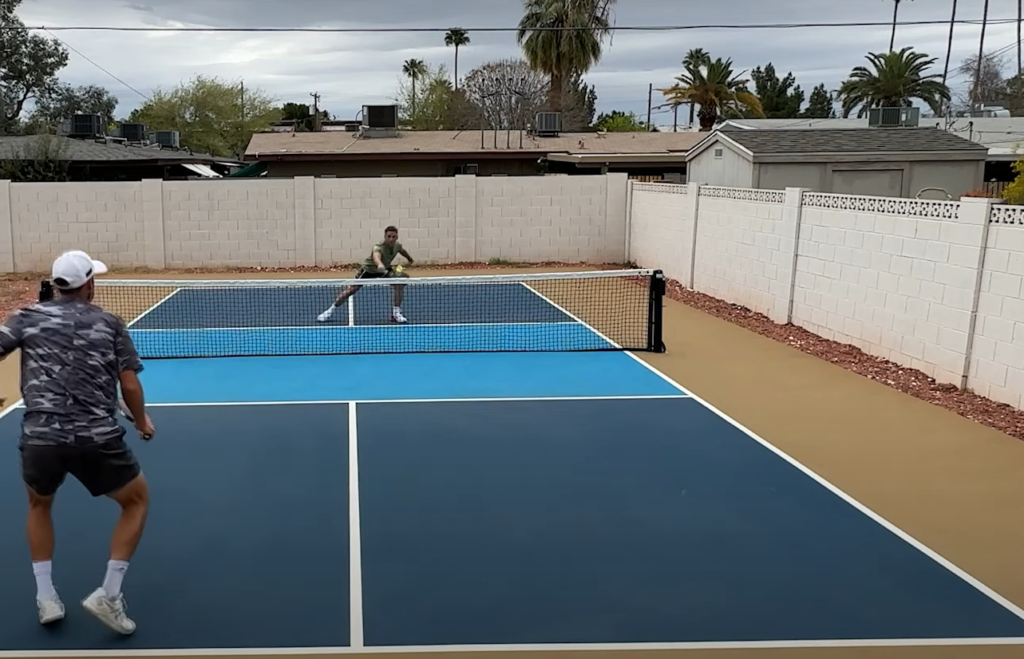
To avoid this fault, it is crucial to practice your shots regularly, focusing on improving your aim and control. Additionally, staying calm and maintaining focus during the game is essential, as panicking or rushing can result in errant shots that go out of bounds. By taking the time to fine-tune your skills and maintaining composure on the court, you can minimize the occurrence of this fault and increase your chances of success in pickleball.
Foot Faults
Foot faults are a common error in pickleball that can result in a lost point. This happens when a player unintentionally steps into the non-volley zone, which is also referred to as the kitchen, while making contact with the ball. To prevent foot faults, it is crucial to be mindful of your positioning on the court and ensure that you remain behind the non-volley zone line when executing shots near the net. By paying close attention to these details, you can avoid committing foot faults and maintain a strong game strategy.
Carrying or Scooping
Another common fault that beginner pickleball players often make is carrying or scooping the ball. This happens when a player unintentionally holds their paddle with an open face, causing them to catch the ball instead of hitting it cleanly. Not only does this result in a less effective shot, but it can also lead to penalties in the game. To avoid this fault and improve your skills, it is crucial to practice proper form and grip on your paddle. Make sure to keep your paddle face flat and focus on hitting the ball cleanly, ensuring a legal shot and maximizing your chances of success on the pickleball court.
Service Faults
Service faults are another common error that can significantly impact a player’s success in pickleball. These faults occur when a player fails to serve the ball correctly, often by not getting it over the net or landing it outside of the designated service area. To avoid this fault and maintain control of the game, it is essential to practice your serves regularly and ensure that you are consistently getting them over the net and within the designated service area. By focusing on accuracy and developing a consistent serve, you can minimize service faults and maintain control of your games [2].
Strategies To Avoid Committing Faults in Pickleball
Pickleball is a fun and easy-to-learn sport that has gained popularity in recent years. However, like any other sport, it requires players to have good technique and strategy in order to succeed. In this document, we will discuss some strategies that can help you avoid committing faults in pickleball.
Understand the Rules
To avoid faults in pickleball, it is crucial to have a comprehensive understanding of the rules. Being familiar with the rules not only helps in preventing faults but also provides an edge over opponents. Some common faults in pickleball include stepping into the non-volley zone (known as the “kitchen”), hitting the ball out of bounds, and carrying or double-hitting the ball.
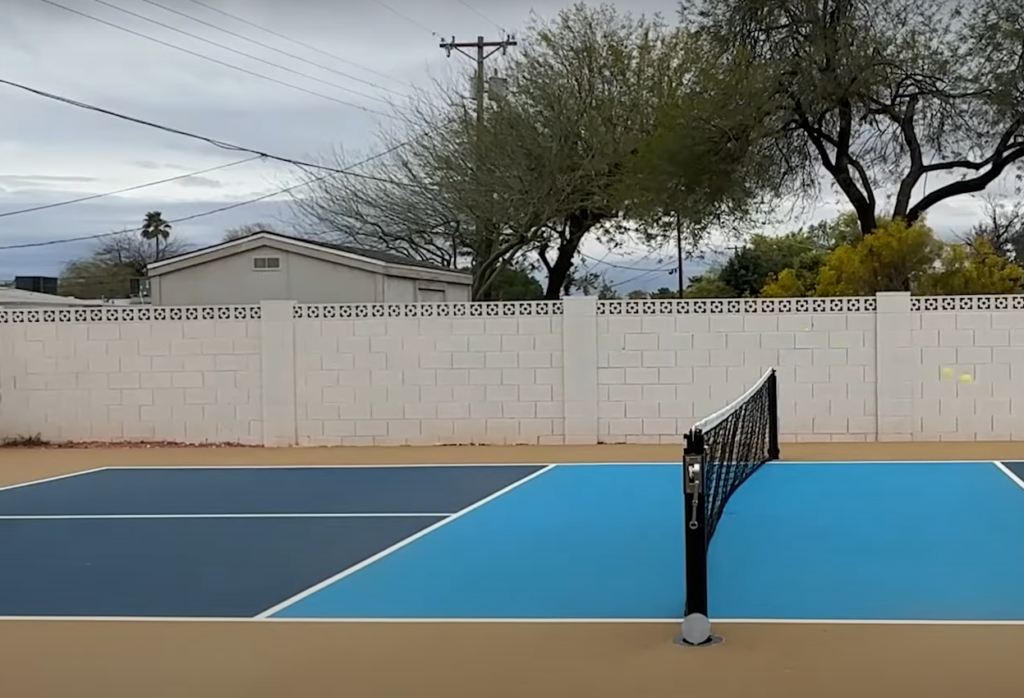
These faults can result in the loss of points or even the entire rally. So, by having a solid grasp of the rules, players can ensure a fair and enjoyable game while maximizing their performance on the court.
Improve Your Footwork
One of the most common reasons for committing faults in pickleball is poor footwork. Having good footwork entails being constantly aware of your position on the court and swiftly moving your feet with efficiency. By doing so, you not only avoid stepping into the non-volley zone but also position yourself better to execute more accurate shots. Engaging in regular footwork drills can significantly enhance your game, enabling you to avoid committing faults and elevate your overall performance on the court.
Practice Consistency
To further minimize faults in pickleball, it’s crucial to prioritize consistency in your shots. Avoid the temptation to hit the ball too hard or apply excessive spin, as these actions often result in errors and faults. Instead, focus on achieving a consistent pace and trajectory for your shots. By doing so, not only will you reduce faults, but you’ll also create a more challenging situation for your opponent when returning your shots. Consistency is the key to success in this dynamic and exhilarating game!
Know Your Limits
In the exciting game of pickleball, it’s crucial to be aware of your personal limits and stay within them. By understanding your own capabilities, you can make wise decisions on the court. Attempting challenging shots or taking risky moves may lead to faults, which can hinder your progress. Instead, channel your focus towards playing intelligently and implementing strategic plays that align with your skill set. This approach not only minimizes faults but also enhances your chances of winning points, ultimately leading to success in the game.
Communicate with Your Partner
In doubles pickleball, effective communication is crucial to avoid faults and maintain a successful partnership on the court. It is essential to consistently communicate with your partner, discussing and strategizing who will take which shots and ensuring a clear understanding of each other’s positioning on the court. By establishing open lines of communication, you can minimize the risk of miscommunication, errors, and ultimately faults, leading to a more coordinated and efficient gameplay [3].
Tips for successful playing pickleball
Pickleball is a fast-paced and exciting sport that combines elements of tennis, badminton, and table tennis. It has been gaining popularity around the world in recent years, with people of all ages and skill levels getting involved. Whether you are new to the game or a seasoned pro, here are some tips for successful playing pickleball.
Get familiar with the rules
As with any sport, it is crucial to have a clear understanding of the rules of pickleball. By familiarizing yourself with the rules, you not only enhance your skills as a player but also contribute to a fair and enjoyable game for all participants.
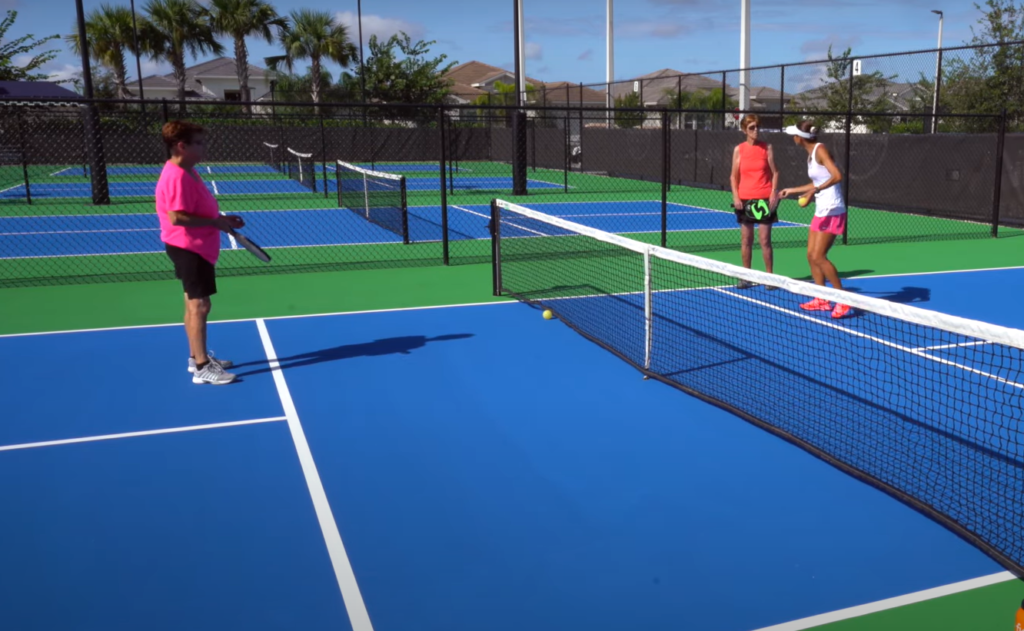
To access the official rulebook, you can visit the website of the USA Pickleball Association, where you will find comprehensive guidelines and regulations to help you navigate the game with confidence. Whether you are a beginner or an experienced player, grasping the intricacies of pickleball’s rules will undoubtedly elevate your playing experience and foster a greater sense of camaraderie among fellow enthusiasts.
Master your footwork
Footwork is absolutely crucial in pickleball, as it plays a vital role in your ability to swiftly navigate the court and position yourself perfectly for every shot. By dedicating time to practice essential footwork techniques such as shuffling, pivoting, and side-stepping, you can significantly enhance your agility and overall performance on the court. So, lace up your shoes, focus on those precise movements, and watch your footwork prowess skyrocket in no time!
Work on your dinks
Dinking is a crucial skill in pickleball, where players hit soft shots over the net to strategically disrupt their opponents’ rhythm. It requires finesse and accuracy to keep the ball low and close to the net, making it challenging for the opponents to return with power.
By developing control and precision in your dinking game, you can gain a significant advantage and dominate the pickleball court.Communicate with your partner
In the exciting game of pickleball, effective communication with your partner holds the key to success. By consistently calling out shots, discussing strategy, and providing unwavering support for one another throughout the game, you can establish a strong partnership that is bound to thrive on the pickleball court. With clear communication, you and your partner will be able to anticipate each other’s moves, coordinate your gameplay, and maximize your chances of victory. Remember, teamwork and effective communication are the secret ingredients that elevate your pickleball game to the next level!
Don’t be afraid to lob
Lobs, which are high shots strategically aimed over your opponents’ heads, can be a highly effective and game-changing strategy in the sport of pickleball. When executed at the right moments, lobs can catch your opponents off guard and create opportunities for you and your partner to gain an advantageous position on the court. However, it is crucial to maintain clear communication with your partner, ensuring that they are prepared and in position to handle the return shot. By coordinating your efforts and executing well-timed lobs, you can maximize your chances of success in the game of pickleball.
Vary your serves
Serving is the one shot in pickleball that you have complete control over, so use it wisely to gain an advantage. Vary your serves strategically by changing up the speed, precise placement, and spin to keep your opponents constantly guessing and on their toes.
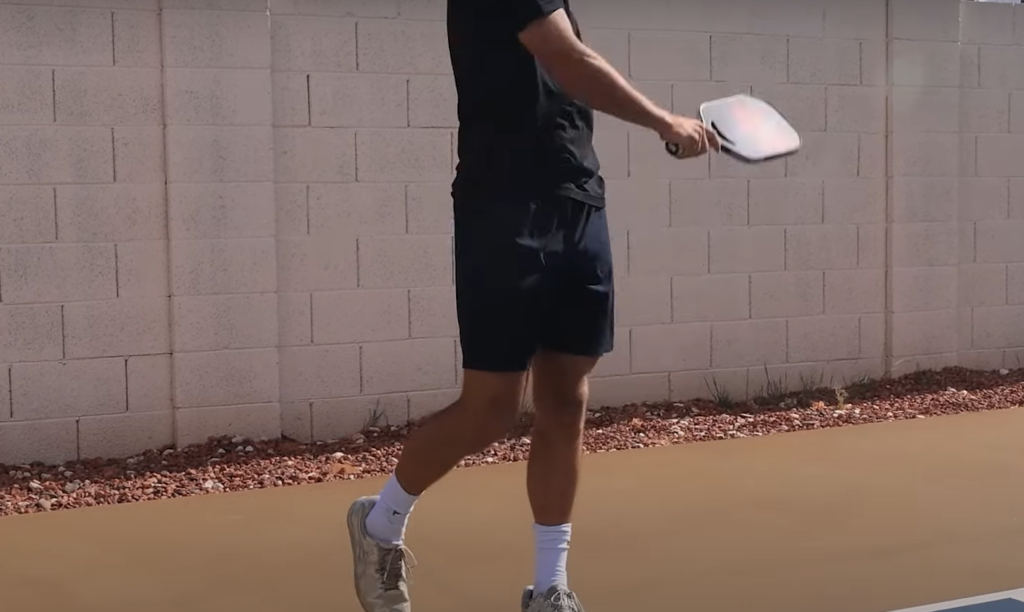
By incorporating different techniques and mixing up your serves, you can effectively disrupt your opponents’ rhythm and increase your chances of success on the court. Remember, a well-executed serve can set the tone for the entire game and give you the upper hand in the match. So, experiment with different strategies and master the art of serving to elevate your pickleball game to new heights!
Practice, practice, practice
As with any sport, consistent practice is key to improving your skills in pickleball. To enhance your game, it’s beneficial to find a local club or court where you can play frequently. By engaging in regular play, you’ll not only have the opportunity to hone your skills, but also learn valuable insights and strategies from other experienced players. Their expertise and different playing styles can provide you with a well-rounded learning experience, helping you grow as a pickleball enthusiast. So, make the most of your practice sessions and embrace the joy of this exciting sport!
FAQ
Are there faults in pickleball singles?
Yes, there can be faults in pickleball singles. A fault occurs when a player violates the rules of the game and results in their opponent getting a point. Some common faults in singles include stepping into the non-volley zone (also known as the kitchen), hitting a ball out of bounds, and not serving underhand.
How many players are on each team in pickleball doubles?
In the game of pickleball doubles, there are two players on each team. The teams are composed of a server and a partner. The server initiates the point by serving the ball to their opponents, setting the game in motion. This format ensures that both teams have equal representation and creates an exciting dynamic where strategy and teamwork come into play.
How is scoring determined in pickleball?
Pickleball uses a unique scoring system that combines elements from both tennis and ping pong. Points can only be scored by the serving team, and a game is won when one team reaches 11 points with a lead of at least two points. If both teams reach 10 points, the game goes into “extra innings,” where the first team to have a two-point lead wins. The first side to win two out of three games wins the match.
Can I play pickleball indoors?
Yes, you can play pickleball indoors. Pickleball can be played on a variety of surfaces, including indoor courts with hard flooring or gym floors. Indoor courts provide a controlled environment that is not affected by weather conditions, making it a popular option for pickleball players.
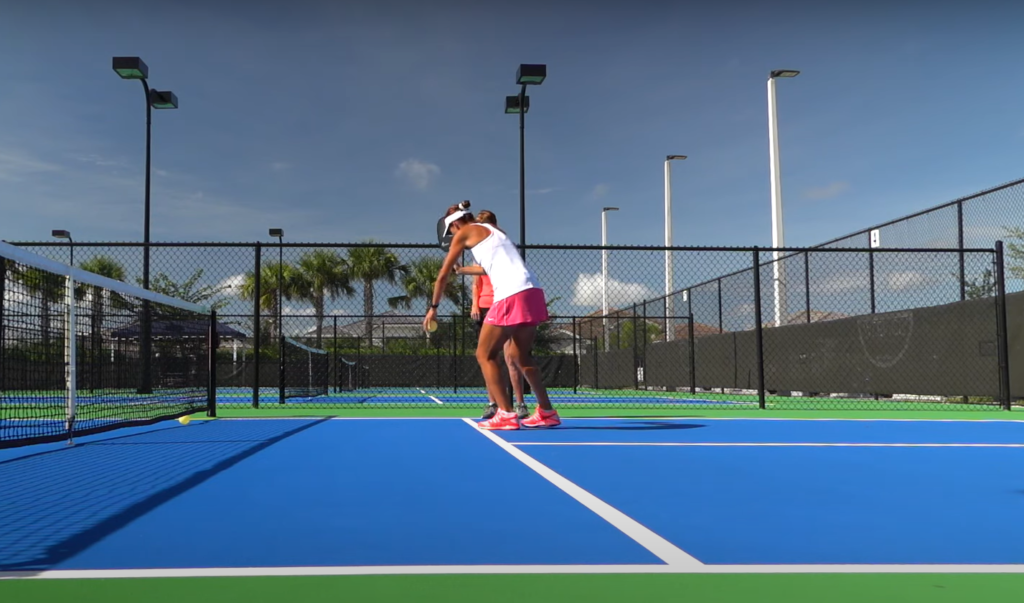
However, the game can also be played outdoors on various surfaces such as concrete, asphalt, or grass. So whether you prefer the hustle and bustle of an indoor court or the fresh air of an outdoor game, pickleball has something for everyone.
What is a let in pickleball?
A let in pickleball is when a serve hits the net and lands in the correct service court, resulting in a do-over. This can also occur during gameplay if there is an interruption or interference that affects the play, such as a ball from another court rolling onto your court. If both players agree to call a let, then the point does not count, and the serve is replayed. Let calls are made on a good faith basis, and players are encouraged to have a sportsmanlike attitude when making these calls.
Who can call kitchen fault in pickleball?
In pickleball, any player can call a kitchen fault. The non-volley zone (also known as the kitchen) is a designated area on the court where players are not allowed to step in and hit the ball. If a player steps into this area while hitting the ball or after hitting it, it is considered a fault. While both players should actively monitor their own footwork, it is also acceptable for the opponent or even spectators to call out a kitchen fault if they see one occur. This promotes fair and honest gameplay in pickleball.
Useful Video: Pickleball Rules: You Make The Call! Fault or No Fault – with Slow Motion Video
Conclusion Paragraph
So, playing pickleball is an excellent way to stay active and have fun! Whether you are a beginner or a seasoned player, there is always room for growth and improvement in this sport. Knowing what fault in pickleball is and how to avoid it will not only improve your playing skills, but also keep you safe from potential injuries. The faults in pickleball may seem minor, but they can have a big impact on the outcome of a game and your overall experience. By being aware of these faults and actively working to improve them, you can become a better player and enjoy the game even more.
References:
- https://thepickler.com/blogs/pickleball-blog/pickleball-rules-faults
- https://www.paddletek.com/blogs/news/common-pickleball-mistakes
- https://primetimepickleball.com/what-is-a-fault-in-pickleball/





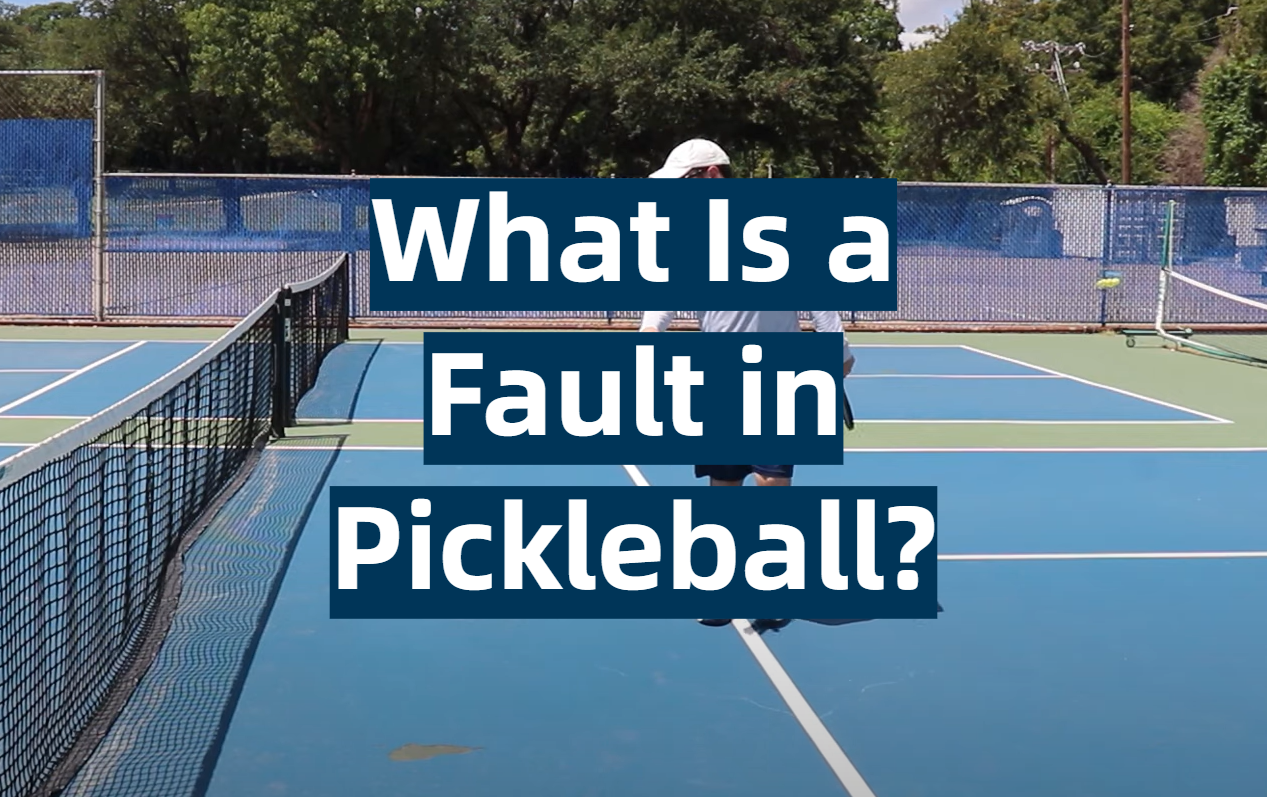
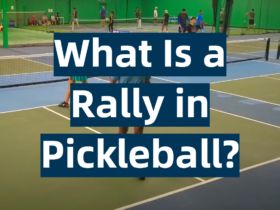
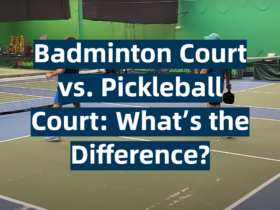
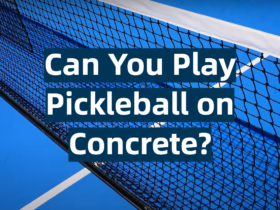
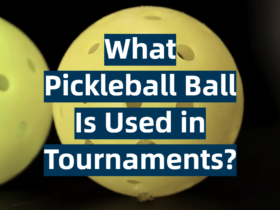
Leave a Review